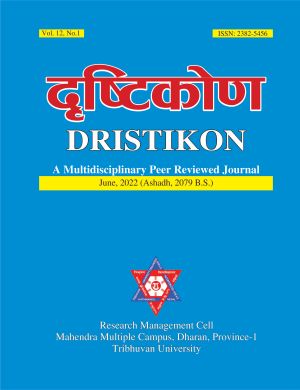Impact of Capital Adequacy on Profitability of Commercial Banks in Nepal
DOI:
https://doi.org/10.3126/dristikon.v12i1.46128Keywords:
tire 1 and tire 2 capital, capital adequacy ratio, return on assets, return on equityAbstract
This paper explores the effect of several bank-specific variables including capital adequacy on the profitability of listed commercial banks operating in Nepal. Determinants of banks’ profitability like ROA and ROE have been assessed by the panel data (21 observations) of 3 listed banks out of 27 banks. In this study, profitability has been quantified in terms of regulatory capital, operating efficiency, bank asset size, loan and advances, and shareholders’ equity. This study found a significant correlation between net profit with shareholders’ equity, Tire 1 capital, total capital, and loan and advance but an insignificant relationship with Tire 2 capital. Again, it has been shown that the credit deposit ratio has a significant impact on return on assets and others have not. Likewise, the shareholders’ equity ratio and capital adequacy ratio have a significant impact but the credit deposit ratio has not on the return on equity of the banks.
Downloads
Downloads
Published
How to Cite
Issue
Section
License
© Research Management Cell, Mahendra Multiple Campus, Dharan

